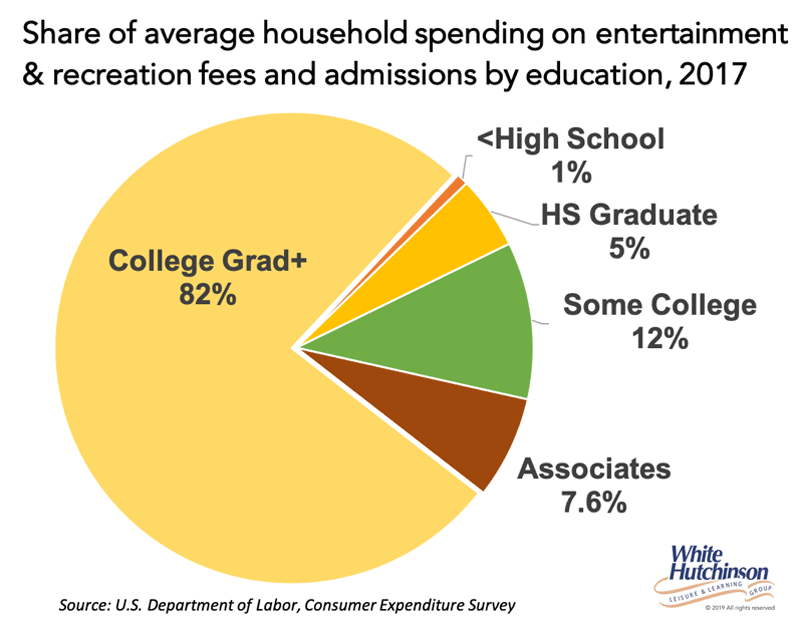
Vol. XIX, No. 4, April 2019
- Editor's corner
- Our Route 66 project
- Promptly responding to negative social media pays
- The changing culture of young adulthood
- Why most CLV, especially FEC, feasibility studies fail
- Yes, it's counterintuitive, but feedback does not help employees thrive
- Panera, C-stores & fast foods raise the bar on food
- The expanding world of location-based entertainment concepts
- Who has time for out-of-home entertainment?
- Satisfying Americans' diverse diets
Who has time for out-of-home entertainment?
Our recent article discussed how time has become the new currency for out-of-home (OOH) entertainment. That article concluded with this summary: “So the bottom line is many people, especially the higher socioeconomic, have less leisure time than in the past for OOH leisure, that time is fragmented, they feel rushed in their leisure time, they value time more than money, they want to collect experiences rather than repeat them and they participate more in social leisure than the lower socioeconomic.”
We dug into the data to see how different socioeconomic adults use their limited leisure time. We used educational attainment to classify them.
On average, adults age 25 and older have 5.18 hours of leisure time every day (311 minutes). They only devote an average of 6.5 minutes, 2.1% of that leisure time a day to attendance at OOH entertainment, arts and sports events. That's only 46 minutes per week. They spend more than three times that much leisure time with digital games and television.

There is leisure time inequity based on education; the higher the education level, the less leisure time.

The above chart has a whole lot of information. What does it tell us that is important? First, bachelor's degree and higher educated adults (college graduates) have the least amount of leisure time, only 4.6 hours per day on average, more than one hour less a day than high school only graduates (-72 minutes). But here's what's most surprising. Even with that much less leisure time, they devote the most time to OOH leisure - 12 minutes a day on average attending arts, entertainment and sports events and 24 minutes a day on average participating in sports and recreation, twice that of high school only graduates. Where do they get the time? They spent a lot less time watching television than less educated adults, 1.4 hours less a day than high school only graduates.
College graduate adults age 25+ account for half of all the time spent attending arts, entertainment and sports events and participating in sports. If we add in adults age 25+ with some college, the two groups together account for almost three-quarters (72%) of all the time spent OOH in those activities.

Now here's what is really amazing. When we analyze household spending for OOH fees, admissions and memberships for entertainment, arts, and viewing and participation in sports and recreation, college graduates account for 82% of all spending. If we only look at fees and admissions for entertainment and arts, college graduates account for 72% of all spending.

So, who has time for OOH entertainment? It ends up that adults age 25+ with a bachelor's or higher degree have the least amount of leisure time, but they make time for OOH entertainment by spending less time watching television and as a result, spend the most time not only with OOH entertainment and sports events, but also participating in sports. And they are the big spenders for these categories, accounting for the lion's share of spending by all adults.
Vol. XIX, No. 4, April 2019
- Editor's corner
- Our Route 66 project
- Promptly responding to negative social media pays
- The changing culture of young adulthood
- Why most CLV, especially FEC, feasibility studies fail
- Yes, it's counterintuitive, but feedback does not help employees thrive
- Panera, C-stores & fast foods raise the bar on food
- The expanding world of location-based entertainment concepts
- Who has time for out-of-home entertainment?
- Satisfying Americans' diverse diets


